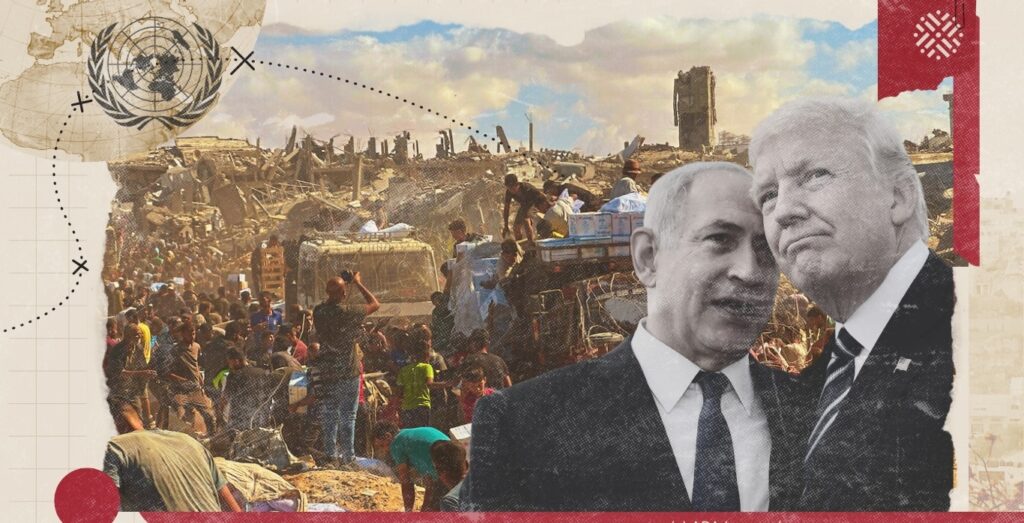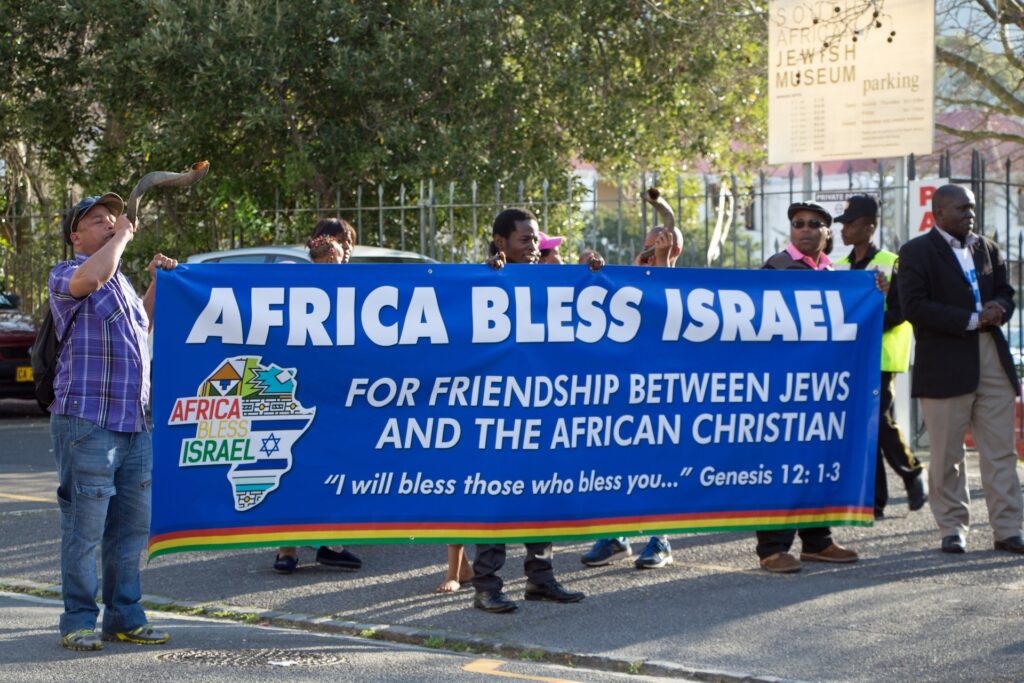- Topics
-
Topics
See our analysis on civil society and how it shapes culture, politics, and policies
Read our insights on the shifting political landscape and what it means for Palestine
Learn more about the policies and practices shaping the Palestinian economy
Strengthen your understanding of the unique conditions for Palestinian refugees across the Middle East
-
- Analysis
-
Analysis
In-depth analysis on existing or potential policies that impact possibilities for Palestinian liberation.
Insights and perspectives on social, political, and economic questions related to Palestine and Palestinians globally.
Concise analysis into a specific policy, its background and implications.
Commentary that brings together insights from multiple analysts.
Compilations of past Al-Shabaka works surrounding a specific theme.
Longer-form, ad hoc projects that seek to confront research questions outside the scope of our regular analysis.
A policy-driven research initiative by Al-Shabaka: The Palestinian Policy Network.
Our monthly webinar series that brings together Palestinian experts.
Featured
The global reckoning that followed October 7, 2023, marked a profound rupture in how Palestine is understood worldwide. The Gaza genocide exposed how Israeli mass violence is not exceptional or reactive, but foundational to the Zionist project. What was once framed as a “conflict” to be managed is now widely recognized as a system of domination to be dismantled. It ushered in a shift away from the technocratic language of peace processes and toward an honest confrontation with the structural realities Palestinians have long named: settler colonialism, apartheid, and the ongoing Nakba. The commentary argues that the Israeli genocidal campaign in Gaza has radicalized the world. When crowds march through global capitals demanding a free Palestine, they simultaneously articulate demands for the abolition of racial capitalism, extractive regimes, climate injustice, and all forms of contemporary fascism. In this moment of radical clarity, Palestine becomes a lens through which the underlying architecture of global domination is laid bare—and through which new horizons of collective freedom emerge. Tareq Baconi· Dec 21, 2025Inès Abdel Razek and Munir Nuseibah joined Al-Shabaka for a conversation on the politics behind the UNSC resolution, the implementability of the US-Israeli plan, and the scenarios now being advanced for Gaza and for Palestine more broadly.
Tareq Baconi· Dec 21, 2025Inès Abdel Razek and Munir Nuseibah joined Al-Shabaka for a conversation on the politics behind the UNSC resolution, the implementability of the US-Israeli plan, and the scenarios now being advanced for Gaza and for Palestine more broadly.
 European empires used Christian missions to legitimize conquest in Africa and advance imperial interests, laying the groundwork for a political form of Christian Zionism. British evangelicals were central in transforming Christian Zionism from a theological belief into an imperial strategy by promoting Jewish resettlement in Palestine as a means of extending British influence. This fusion of religious ideology and imperial ambition endures in contemporary Christian Zionist movements, which frame modern Israel as the fulfillment of biblical prophecy and recast Palestinian presence as an impediment to a divinely ordained order. This policy brief shows how these narratives and their policy effects have taken root in the Global South, including in South Africa. In this context, Israeli efforts increasingly rely on Christian Zionist networks to weaken longstanding solidarity with Palestinians and cultivate support for Israeli occupation.
European empires used Christian missions to legitimize conquest in Africa and advance imperial interests, laying the groundwork for a political form of Christian Zionism. British evangelicals were central in transforming Christian Zionism from a theological belief into an imperial strategy by promoting Jewish resettlement in Palestine as a means of extending British influence. This fusion of religious ideology and imperial ambition endures in contemporary Christian Zionist movements, which frame modern Israel as the fulfillment of biblical prophecy and recast Palestinian presence as an impediment to a divinely ordained order. This policy brief shows how these narratives and their policy effects have taken root in the Global South, including in South Africa. In this context, Israeli efforts increasingly rely on Christian Zionist networks to weaken longstanding solidarity with Palestinians and cultivate support for Israeli occupation. Fathi Nimer· Dec 7, 2025
Fathi Nimer· Dec 7, 2025
-
- Resources
- Media & Outreach
- The Network



Dis-participation as a Palestinian Strategy?
Many solutions have been put forward to the decades-long crisis of leadership afflicting the Palestinian people, such as reform of the Palestine Liberation Organization (PLO) from within through elections to the Palestinian National Council, or bringing Hamas and other Islamist groups into the PLO Executive Committee.
However, the crisis of the existing leadership and indeed of all political parties on the Right as well as on the Left is now so deeply engrained that the only way forward may be to “dis-participate” in the present Palestinian political system.
What is “dis-participation”? As defined by Mesud Zavarsadeh and Donald Morton in a different context in their Theory as Resistance, “the options come down to either being ‘persuaded’ of the legitimacy of working within the system and thus accepting the existing structures, or finding that there is no space for radical change.”1 The problem of working within an existing system that has lost legitimacy is that it obscures what is “possible which is suppressed in the pragmatic is” as Zavarsadeh and Morton point out.
In order to spotlight the power of what is possible for the Palestinian people we must first dis-participate in illegitimate and ineffective political structures. Otherwise we continue to face a very limited set of options each worse than the other and none realizing Palestinian self-determination and rights. Let me immediately say that this is not a call to end Palestinian activism for self-determination, freedom, justice, and equality – far from it, as will be discussed after a brief review of the crisis of the Right as well as the Left below.
The Crisis of the Right
Applying the term “illegitimate” to the entire Palestinian political system, including the political parties on both the Left and the Right, may sound too harsh or sweeping – until one examines the facts. I have recently written extensively about the crisis of the Right in both its secular and religious manifestations at Rai Alyoum and about the crisis of the Left at Alternative News. The main points are set out below.
The crisis of the rightwing parties, both “secular” (Fatah and its allies) and “religious” (Hamas and its allies) is now more flagrant than ever.2 It is wrong to trace this crisis back to the 2007 confrontation between Fatah and Hamas, in large part engineered by the U.S., which led to the split between Gaza and the West Bank.
Rather, the crisis of the Right dates back to the October 1973 War and the adoption of the PLO 10-point Interim Program of 1974 and the principle of establishing a national authority on any part of Palestine that was liberated. This in turn led to the concessions made in the Oslo Accords as of 1993. Thus, even if the Fatah-Hamas split were to be healed, as several government and civil society initiatives have attempted to do as a first step to righting the Palestinian body politic, this would not revive the Palestinian Right as an effective force for Palestinian self-determination and rights.
At this stage, both religious and secular Right are committed to the two-state project, which basically denies the Palestinian right of return and transforms the relationship between the Palestinians of the West Bank and Gaza, on the one hand, and the Palestinian refugees, exiles and citizens of Israel on the other into one of “solidarity.” As for the hoped-for state, should it come about, it would be no better than a Bantustan based on ethno-religious discrimination. Worse, the West Bank and Gaza have themselves now become two distinct entities.
The secular Palestinian Right and now the religious Right have basically fallen into the trap set decades ago by the Zionist left, which was willing to accept a Palestinian state along with a “just solution” for the refugee question. This is the approach the PLO accepted in its Interim Program despite the contradictions between the establishment of an independent state on the 1967 borders and the right of return as well as the right to self-determination of the Palestinian people as a whole. And this is the approach was enshrined in the Oslo Accords as of 1993.
Both the secular and the religious Right have made it a priority to establish relations with the U.S. The secular Right was successful while the religious Right repeatedly sends messages about its willingness to accept a two-state solution and abide by a 20-year truce, albeit without formally recognizing Israel. Both sides have been willing to accept “independence” in exchange for freedom. Neither has shown the capacity for creative, effective resistance. Their priority is to maintain their political existence in the form of two spineless authorities in two separate Bantustans. Their bankruptcy is compounded by the fact that Israel has made it crystal clear that its relentless colonization project will continue.
The Osloized Left
The failures of the Right should not occasion too much surprise. It is the failures of the Left that pain and disappoint. The Left’s deterioration followed its implicit acceptance of the Oslo Accords despite its alleged opposition. The People’s Party (the former Communist Party) legitimized them by its acceptance of ministerial positions in almost every government formed since establishment of the Palestinian Authority (PA) in 1994. And both the Popular Front for the Liberation of Palestine (PFLP) and the Democratic Front for the Liberation of Palestine (DFLP) participated in the Legislative Council elections of 2006, thus providing legitimacy to one of the most important institutions of the Oslo Accords. They also tacitly accepted the two illegitimate PNC meetings held after Oslo was signed.
I should confess that I, like many residents of the West Bank and Gaza, naively thought that the Palestinian Left and other liberal forces would use this opening to strengthen and democratize the Palestinian national movement and weaken Fatah’s authoritarian grip on the PLO. However, the Left’s claim to represent the national aspirations of the people turned out to be hollow.
No honest supporter of the Left would disagree that the Oslo agreement has brought disaster to Palestine. In the words of the late Edward Said, Oslo was a “second Nakba.” It brought with it an unprecedented level of corruption, security cooperation with Israel, even more aggressive and fast-paced colonization of the West Bank and East Jerusalem, and a brutal and remorseless siege on Gaza.
Most members of the political bureaus of the major Left parties are either directly employed by the PA/PLO or get paid monthly salaries without being directly employed. Can they make an honest or effective call for the dissolution of the PA as some respected Palestinian activists and intellectuals urge? Meanwhile, many of those that are not employed by the PA have become directors of the mushrooming, Western-funded NGOs, with all strings and agendas that come with it. In short, instead of leading the efforts to fight the outcome of the Oslo Accords, most of the Left has, alas, been tamed by the Oslo Accords. This is a development I have previously termed “Osloization.” It should be noted that not all the Left has gone this route and there is a segment, albeit small and marginalized, that is seeking alternatives.
The Left’s inexorable deterioration is perhaps best illustrated by the opportunistic and unprincipled position it adopted toward the standoff between Hamas and Fatah. Instead of respecting the outcome of the 2006 elections and supporting the formation of a united front with the party that won the elections with a clear majority on a platform of resistance and reforms, the Palestinian Left largely supported the unconstitutional Ramallah government and fought the caretaker government of Hamas.
None of the PA’s actions have motivated the Left to take a principled or effective position that would persuade the “official leadership” of the PLO to reconsider its actions. The list is long and includes: the shutting down of charity organizations in the West Bank; the banning of two Hamas affiliated newspapers in the West Bank; the shutting down of the offices of Al-Aqsa Satellite Station; the PA’s imprisonment of political prisoners without trial or charge; the decision to return to the negotiating table; the obstruction of the Goldstone Report at the United Nations Security Council; and the brutal force with which the PA security forces attack anti-Oslo demonstrations, including those organized by left-wing organizations.
Even the PFLP, in theory the most radical of the Left, turned a blind eye to the open secret of General Keith Dayton’s widely circulated plan to orchestrate a coup d’état using the PA security forces against the Hamas government. The PFLP, the DFLP and the People’s Party have not effectively protested the PLO’s pro-American agenda and its repeated efforts at normalization or those of its controlling party Fatah.
Today, one has to ask what still remains of the PLO and in fact, what remains of the Palestinian question at all. What rationale can the Palestinian Left possibly have for their ongoing commitment to a PLO that they say has been “hijacked?” The heavy legacy of Stalinism is still stifling the Arab Left in general and the Palestinian Left in particular. It is one of the major differences between the Arab and Palestinian Left and that of Latin America.
I am, however, aware that there is a big difference between the “ancient” leaders of the left and the cadres who work on the ground, particularly the youth on the Left, although Fatah and Hamas still have significant following as university student council elections demonstrate. Several youth movements have recently been formed, including Herak Shababi that has helped coordinate the large and determined “Stop Prawer”protests against Israel’s latest attempts to ethnically cleanse the Negev Bedouin, using social media following the example of Arab youth movements in Tunisia, Egypt and other Arab countries.
Dis-participation: Decolonizing the Palestinian mind
The question is how can change be effected in such a bleak political environment? This question urgently requires an answer not just for the youth but for all those who still hold Palestinian national rights dear, and we are many. This is where the concept of “dis-participation” can help.
To dis-participate is to put the legitimacy of the existing order at stake, and at the same time to work for other alternatives and possibilities. It means rejecting the existing system and its political and ideological bias and revealing and oppose its exploitative, distortive, authoritarian features. Putting the concept of “dis-participation” into practice would reclaim Palestinian agency of the kind that will actually realize Palestinian national rights.
Many parties and individuals across the occupied territories are still calling for elections to the Palestinian Legislative Council (PLC) in the occupied territories as the solution to all Palestinian problems. Really? The PLO has demanded that all factions accept the PA and participate in elections, forcing some organizations on the Left to falsely claim that elections for the PLC are a manifestation of plurality. (Of course, the refugees and exiles were excluded from these elections.) The result is a situation in which political legitimacy is only granted to those who agree to work within the system. This is not plurality.
There are already examples of how it is possible to dis-participate and yet to work toward realizing Palestinian rights. The civil society-led movement for boycott, divestment and sanctions (BDS) until Israel recognizes and upholds international law works outside the system and holds the system to account. The youth movement is another way of dis-participating while working for rights. Another important development in recent years is collective activism by Palestinians across all of historic Palestine. The protests against the Prawer Plan were an example of such cross-border activism.
It is worth noting that representatives of the entire Palestinian political system – from Left to Right – are part of the BDS National Committee where decisions are taken by consensus. In other words, even if political party leaders are now working in a deeply compromised system, the commitment to achieving Palestinian rights still runs deep amongst party cadres.
Of course, without a representative national movement in some shape or form, social movements cannot on their own achieve Palestinian rights, although they can help to ensure that these rights are not sold out.
The hope for such a national movement can only come from an alliance between the political party cadres still committed to Palestinian rights and the nascent Palestinian youth movement through a process of dis-participation that involves rejection of the existing system and its replacement.
It is unlikely that change can come from the right, but can we imagine a “new” Left that is completely free from the Oslo legacy and can provide a democratic alternative to the two-state industry? A Left that can really challenge the status quo and hold it accountable to Palestinian rights? Such a Left would have to dis-participate in the current establishment and:
Without these and other radical steps, there is no hope for the Palestinian Left as Osamah Khalil, put it in a different context: “Instead, much as they experienced in the PLO after 1988, the Palestinian Left’s desperation for relevance will be used to further the agendas of stronger parties whose positions and platforms are antithetical to their own.”
The above sets out a snapshot of some of the challenges that face the Palestinian people and a call to address them through dis-participation in illegitimate structures. These preliminary ideas are intended to provoke debate and push forward thinking about alternatives to move beyond the existing system. There is no question that the creativity and determination the Palestinians have shown for close to a century will identify and realize those alternatives.
Haidar Eid
Latest Analysis
The World Radicalized by the Gaza Genocide
Legitimizing Genocide: The Israel-Trump Plan and Gaza’s Future
Christian Zionism in the Global South: The Case of South Africa
We’re building a network for liberation.
As the only global Palestinian think tank, we’re working hard to respond to rapid developments affecting Palestinians, while remaining committed to shedding light on issues that may otherwise be overlooked.